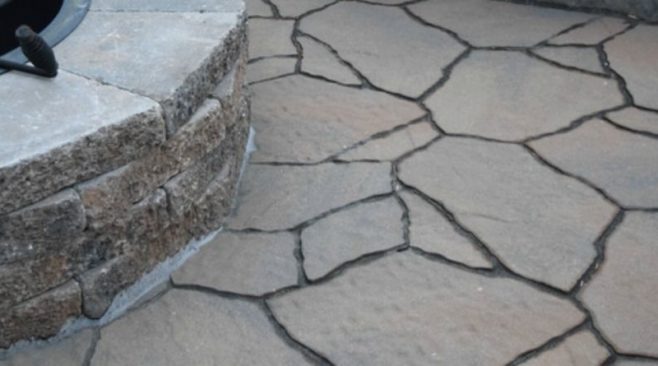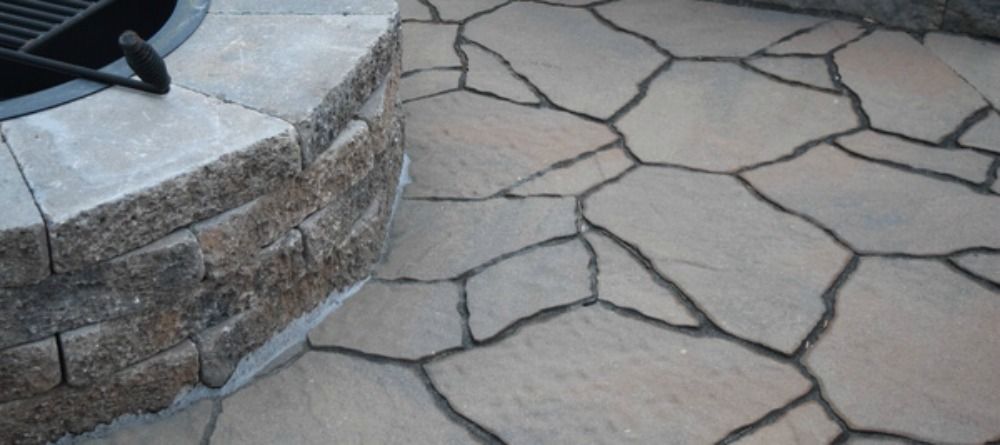Although a concrete patio can provide you with a functional space to enjoy outside of your home, it may not offer the ambiance and aesthetic value that you’d like. Fortunately, this problem can easily be remedied by installing pavers on top of the existing concrete surface.
Numerous homeowners throughout NJ and its surrounding areas make the decision to do so each year. It’s not uncommon for us to receive inquiries about the process. Some of our customers wonder if installing pavers over concrete will be reliable and offer structural integrity, while others are concerned with the necessary steps for construction and the total cost of the project. To help you to make the best decision about your patio upgrade, consider the answers to these common inquiries. They should help you determine if installing pavers is the right solution for your property.
1) Why do people install pavers over concrete?
If you already have a concrete patio, you may be wondering why you would want to expend the time and effort on covering it up in the first place. The primary reason why homeowners choose to upgrade their concrete patios is to improve its overall appearance.
Installing pavers over concrete enables you to get creative with the look and style of your patio. You’ll have the freedom to play around with different layouts and patterns in order to create an outdoor living space that gels with your unique personality. As an added benefit, this type of upgrade can add to the value of your home by enhancing the curb appeal.
Depending on the style, layout and coloring of the pavers, just about any look can be achieved – from classic to charming to modern and everything in-between. Not only will upgrading the look of your patio speak to your own personal preferences, but it will also work to improve your property value.
2) Are pavers installed on top of concrete reliable and structurally sound?
The short answer to this question is “yes,” but we will elaborate. While we typically think of concrete as extremely tough, durable and reliable (and it is!), the material does have its limitations.
A large, solid slab of concrete is prone to developing cracks and holes after exposure to the freeze-and-thaw cycles that are so common here in the northeastern U.S. Not only is this unsightly, but it also creates problems with the functionality of the space. It may become more difficult for homeowners to use patio furniture on uneven surfaces and it may even be dangerous to walk across affected areas. Installing pavers over concrete can help to prevent problems like these.
Because of their smaller size, individual pavers are less prone to cracking as the material expands and contracts during temperature fluctuations. In the event that one of your pavers does become damaged, there’s no need to worry; most paver stone manufacturers offer lifetime warranties on their products.
3) Which types of pavers can be installed over concrete?
This is entirely left up to your discretion! Any type of stone or manufactured paver that could normally be installed as a patio can be laid on top of existing concrete. Be sure to check out all of your options to ensure that you select the right type of pavers for your project goals.
You might choose from flagstone, bluestone, brick, manufactured concrete or interlocking pavers and more. You’ll also have the ability to select from irregular or dimension cut pavers. With all of these different choices in material and design, you will have the opportunity to make space a true representation of your style.
4) What materials are required to install pavers over concrete?
Before you dive in and get started installing pavers over your concrete patio, you first need to assemble all of the required tools and materials. We strongly suggest that you have the following items on hand:
- Wheelbarrow
- Landscape Fabric
- Broom
- Rake
- Pavers
- Sand
- Polyurethane adhesive/mortar
5) What steps are required for installing pavers over concrete?
Once you have your tools and materials assembled, you’re ready to move forward with installing pavers on top of your concrete patio. Whether you’re handling the work on your own or hiring a professional, it’s in your best interest to understand the process. The required steps include:
- Step 1 – Wash and prepare the base – Prior to installing pavers, you’ll need to take the time to thoroughly scrub the surface of the concrete in order to remove any substances or debris that could create issues with establishing a level and reliable base. If the concrete is cracked or has holes, there’s a chance that weeds and grass will grow through. To prevent issues, be sure to lay down a layer of landscaping fabric before proceeding to step 2.
- Step 2 – Glue down border – Establish a perimeter by laying pavers down along the outermost edges of the patio area. This will create a contained area for the patio or walkway. Glue down the pavers so they remain in place.
- Step 3 – Install Pavers – From here, you’ll follow a standard installation process. Work from the outside-in and be sure to firmly press each paver into the sand so that it holds its place.
- Step 4 – Spread polymeric sand – Polymeric sand is frequently selected as the adhesive of choice for paver patio installations. Pour the sand over the surface of the patio and use a push broom to carefully work the sand into the joints between each individual paver. Make sure that all joints are completely filled with the adhesive material. Use the poly sand for an overlay application, spread the sand over the top of the pavers. This can be done multiple times, even years after your pavers were installed to fill the joints.
- Step 5 – Sweep and spray the patio – Sweep over the pavers to ensure that no loose sand remains on top of the patio. Next, you’ll need to spray the entire patio with water. Polymeric sand becomes activated when it is wet, so this is what will bind the pavers together.
6) How should I properly care for my newly upgraded patio?
Once you’ve finished installing pavers over your concrete patio, there’s not much required in terms of maintenance. Since patio pavers are so strong, reliable and long-lasting on their own, they require minimal maintenance.
In order to further add to the integrity of pavers, we recommend sealing the patio after construction and at least once every other year thereafter. It’s also wise to sweep your patio regularly in order to prevent a buildup of leaves, grass, dirt and other debris which could cause staining.
Should the pavers become stained, work to remove the blemish with a diluted solution of mild detergent and water. Be sure to check manufacturer specifications before applying any type of rock salt or ice melt.
7) Where can I buy patio pavers in NJ?
Braen Supply is the most reliable supplier of patio pavers and other landscaping materials in NJ. We partner with the leading paving stone manufacturers in order to ensure that our customers are able to choose from high-quality materials that will cater to a variety of different needs and desires.
Sometimes installing pavers can be tricky and can become overwhelming, so it’s best to talk to a contractor or our staff to decide if installing them by yourself is really the best option. Our professional staff offers a wealth of knowledge about each of the products that we sell and are more than happy to answer questions, address concerns and offer up valuable advice.
You’ll enjoy competitive, low pricing every day. Our pavers can be picked up at your convenience or can be bulk delivered to locations throughout NJ, NY, PA and CT.



